
Right in front of the Hassan Tower stands the mausoleum Mohammed V, a monument of unparalleled beauty. Its construction began in 1962 and ended in 1971. This monument is dedicated to the memory of the late monarch Mohammed V, beloved by the people who have always considered the symbol of the Liberation of the Nation. In the mausoleum one can also see the tomb of his successor, Fire Hassan II...
More details
Literally “bastion of tears”, it lies next to the mausoleum of Sidi Ben Achir. Named also Scala Al Qadima, Borj al Caïd, Borj al Hassani, it is a former bastion that dominated the mouth of the Bouregreg. Raised in the place of an ancient fortification, it was restored by A. Fennich, who replaced the stones of the Qasba Gnaoua he had just demolished, hence the name of Borj Addoumoue. The...
More details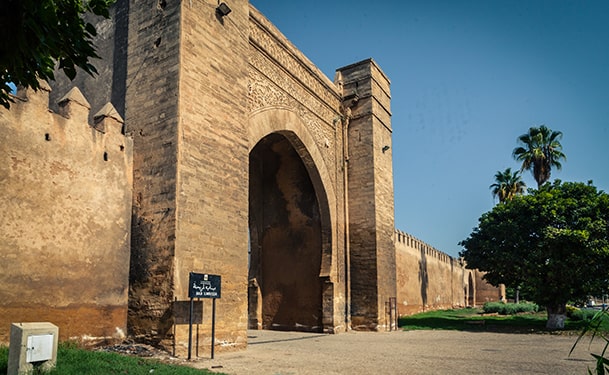
An emblematic monument of Salé, Bab Lamrissa, also called Bab Mellah, is a fortified gate dating back to the 13th century. Former sea gate, it is one of the main gates of the current wall of the medina of Salé and has the most impressive size. It is one of the two monumental gates of an old maritime warfare apparatus, built between 1260 and 1270 by the Merinids. Its construction...
More details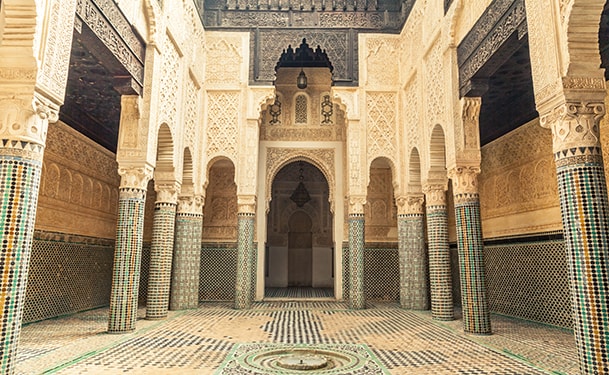
The merinid madrassah (also called madrassah of Abu Al Hassan) is the only medersa still present in the medina of Salé. It welcomed students from all over the country in their quest for knowledge and learning, despite its small area no more than 180 m².
More details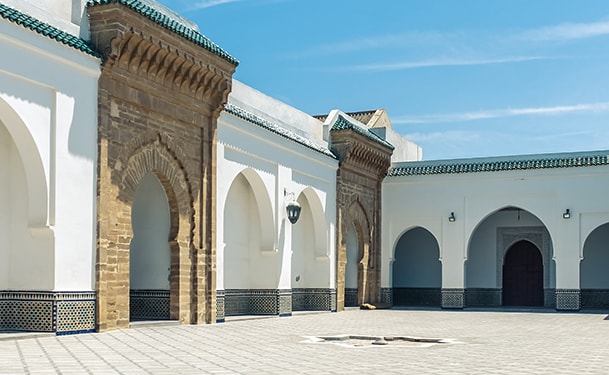
The Almohad Great Mosque “Jamaâ al-Aâdam” stands in the middle of the Talaâ area and oversees almost all the Medina. It is the second oldest mosque of the kingdom after Al Quarawiyn. Built on an area of 5 070 m², the Great Mosque of Salé is adorned with 9 doors, the main one was mounted on the wall of the qibla.
More details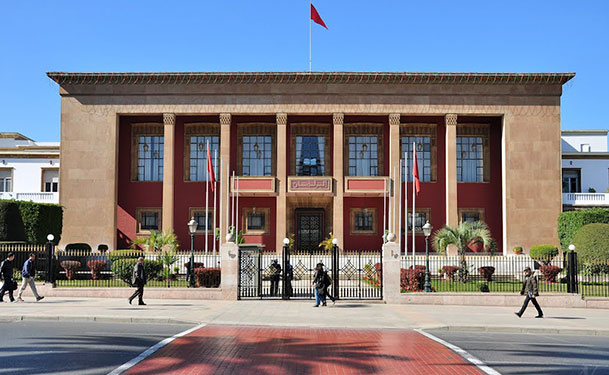
On Mohammed V Avenue rises the Parliament building, stark and refined at the same time. Formerly the building was a courthouse. It was designed by Architect Laforgue who, immediately after his arrival in Morocco in 1913 (one year prior to the WWI), had for a mission the building several large scale facilities.
More details
Built under the reign of Sultan Moulay Hassan I, the construction works were finished in 1889, the fort was inaugurated in 1902. The Fort Rotengurg is the work of the German architect Walter Rotheburg, hence the name it was given first. It was supposed to accommodate two enormous cannons weighting 30 tons each, and offered to the Sultan by the German firm, Krupp, which used to specialize in the heavy...
More details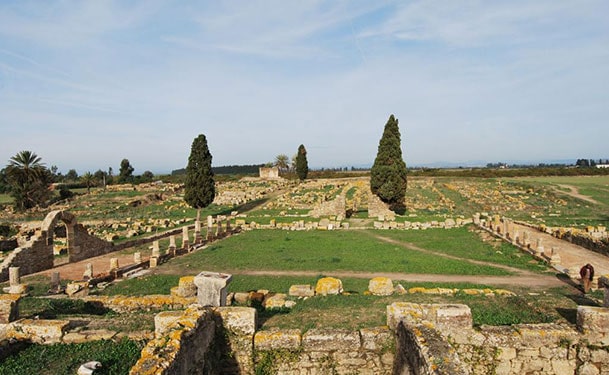
Located on the left bank of Sebou River, 14 km from Mashraa Bel Kisiri (rural commune of Sidi El Kamel, the Caidat of Dar el Gueddari), the ancient city of Banasa, known also under the name of Sidi Ali Boujnoune ,was cited by several ancient historians, such as Ptolemy and Pliny the Elder.
More details
The small gate opens onto the southern end of Bouiba Street, which is a continuation of Sidi Fateh Street in the Medina of Rabat. Its name comes from the fact that its arch was so low that a tall man could not go through it without bending down. It is a simple straight gate flanked by two massive towers. It is an Alawite gate made by Sidi Mohammed Ben Abdellah...
More details
The only gate in the south face of the Almohad Rampart, it leads to the hinterland towards the Zaer tribes. It is also the smallest and most revamped gate, notably in the 18th century by the Alawite Sultan Sidi Mohammed ben Abdallah (1757-1790).
More details
The gate of departure, is the largest gate of the Almohad enclosure. Its decor is rich and remarkably executed, it’s made up of four rooms (originally bent), of which the first has an interesting fluted dome. It is now converted into an art gallery.
More details
The construction of the royal palace of Rabat began in the middle of the 19th century on the ruins of an ancient palace. Also called Dar El Makhzen, majestic and protective, the building is a fine example of Moroccan art. Surrounded by an enclosure, its main entrance overlooks a vast esplanade, the Mechouar, is used for the outdoors royal ceremonies.
More details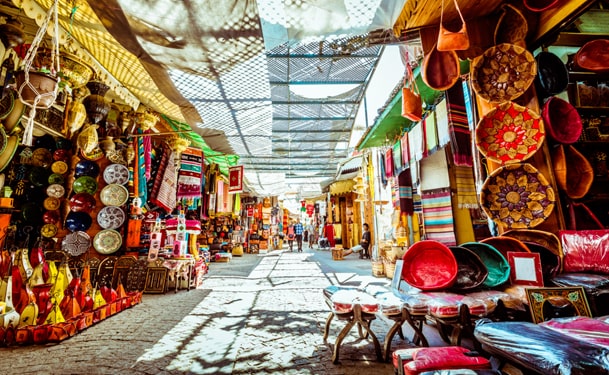
With the Almohade Dynasty (XII Century) the Rabat site is going to start a continuous extraordinary historical journey full of radiance and activity. This, however, did not prevent the city from going through a phase decline, as of 1253, with the advent of the dynasty of Almoravids who had chosen the city of Fez for a capital. In 1609, the Moriscos who were chased away from Spain during the Reconquista...
More details
The Hassan Tower is considered as the symbol of Rabat, it is one of the most famous sites of the kingdom. The Hassan tower remains the only vestige of what was to be, at the instigation of the Almohad sultan Yacoub Al Mansour (12th century), the largest mosque in the Muslim world. This oversized project was not going to survive, at the death of the latter, in the year 1199,...
More details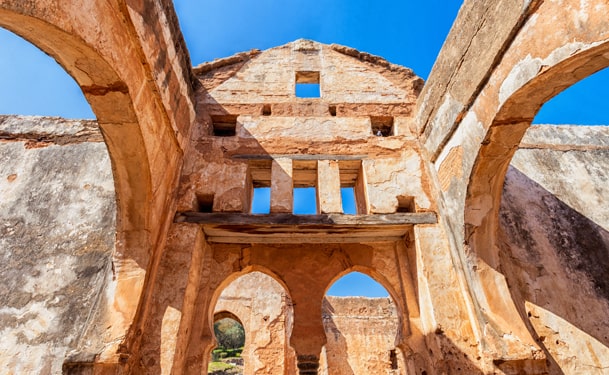
Built in the XIV Century by the Merinid dynasty upon the ruin of the ancient Roman city of Sala Colonia, the Chellah necropolis is located at a distance of two kilometers from the city center, off the Almohad enclosure. According to historians and archeologists, the Chellah site was undoubtedly the most ancient human agglomeration ever set on the estuary of the Bouregreg River. For proof, one can allude to the...
More details
The Bab El Had gate is part of the Almohad wall, it was built towards the end of the 12th century by Yaacoub El Mansour. El Had means in Arabic the edge of the sword (7ad Essayf). This gate was so named because it was in front of it that murderers were executed, by decapitation by the sword.
More details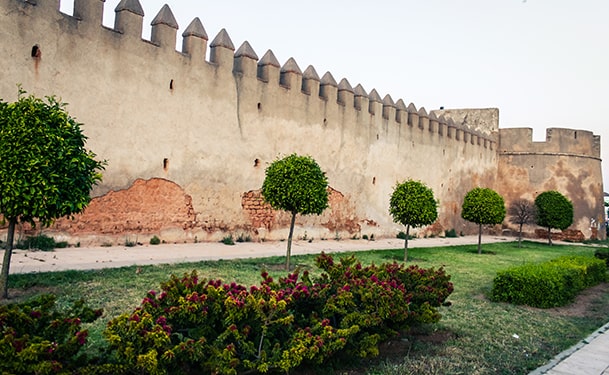
The wall of the Andalusians delimits the southern part of the Medina. When it was built at the beginning of the seventeenth century, it bordered the part where the Moriscan refugees settled in the southern part of the future Almohad city, which was actually uninhabited and consisted only of fields ². More than 1.4 km long, the height of the wall varies between 4.9 m and 5.5 m for an...
More details
Within a fifteen minute walk from the Rabat City Center stands the Casbah of the Oudayas at the Bou Regreg estuary, a real fortress dating back to the XII century. With its monumental Almohade portal, the Kasbah is a gripping site which offers the visitor a never seen before beauty that encompasses the Andalusian style garden, a museum, some riyads and some mosques. The Andalusian influence is omnipresent with the...
More details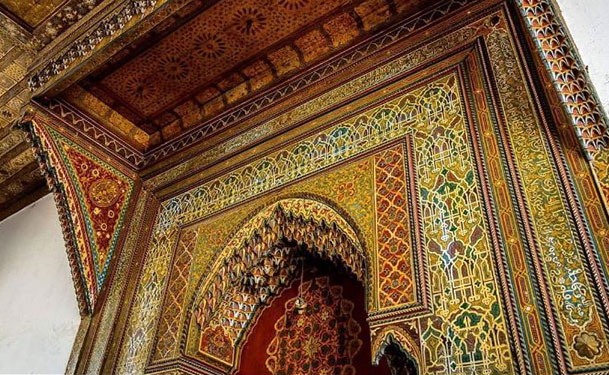
According to an ancient lore, Moulay El-Mekki, whose name the mosque now bears, moved to Rabat after leaving his family – the Shorfa of Ouezzane – following a dispute with his brothers. According to this lore, Moulay El Mekki treated a wealthy merchant of Andalusian origin from an incurable disease, and in gratitude, he gave him his house. It was next to a small sanctuary where Moulay El Mekki usually...
More details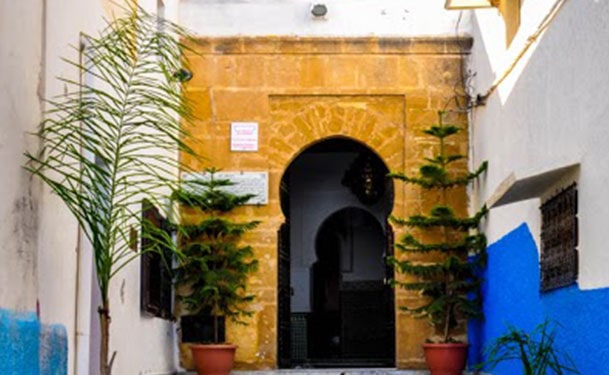
The Mosque of the Kasbah, known as Jamaa al-Atiq, was founded in 1150 during the reign of Abdelmoumen. Because it has always remained open to prayer, it has undergone several changes. According to an ancient author, the Alawite Sultan Sidi Mohamed ben Abdellah had the mosque rebuilt by an English convert named Mohamed al-Inglizi.
More details
Certainly, it is the most beautiful avenue of the capital. It strikes with its beautiful fountain and its many palm trees, and offers the visitors an exceptional walk. It hosts the Parliament with its red facade, the Great Post Office and the Bank
More details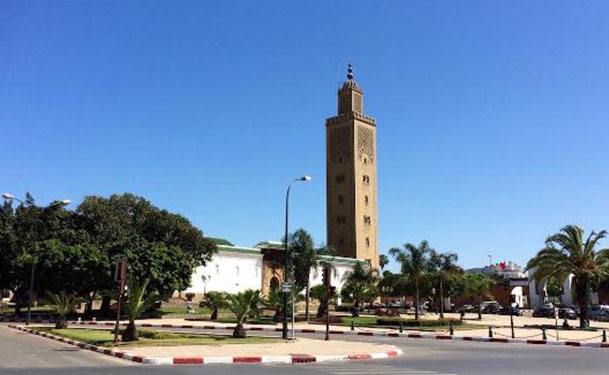
It was built during the reign of sultan Sidi Mohammed Ben Abdellah around 1785. The building is characterized by its large dimensions, perfect regularity and extreme simplicity. The prayer hall is divided into three large 700 m wide naves, parallel to the Qibla wall. Very thin horseshoe arches rest on square pillars and support barchelas covered with green tiles. A regular rectangular courtyard occupies the western part. Decorated with two...
More details
Also known under the name of Sidi Ali Ben Ahmed, this ancient city is a river port from Roman times in Morocco. It falls within the territory of the Commune of Oulad Slama, on the left bank of Sebou River about 10km north of the city of Kenitra.
More details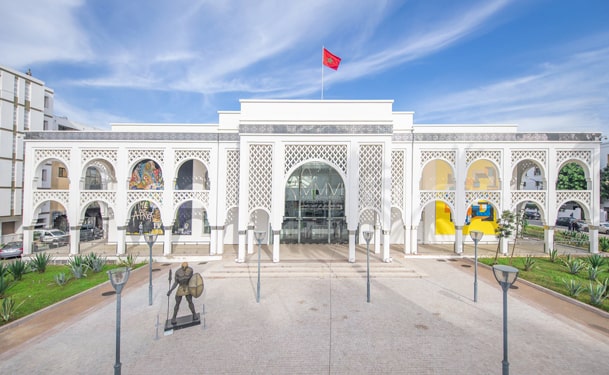
Inaugurated on 7 October 2014, the Mohammed VI Museum of Modern and Contemporary Art is the first museum institution in the kingdom to devote itself entirely to modern and contemporary arts. This museum is also the first Moroccan public institution to meet international museographical standards. The MVIM aims to cover the evolution of Moroccan artistic creation in plastic and visual arts, from the early 20th century to date. Since its...
More details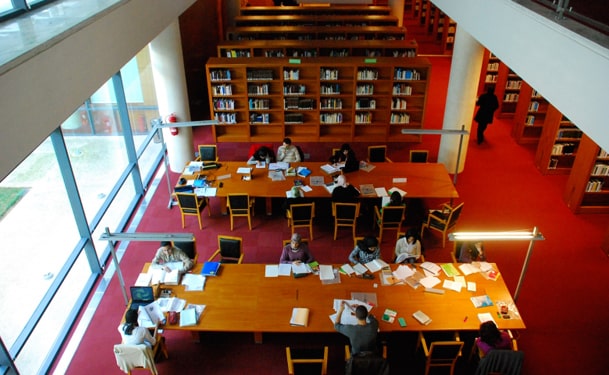
With a surface of area of 20 832 m2, the new National Library is a public and cultural institution. Thanks to modern and dynamic dissemination and broadcasting means, and to the mobilization of new information technologies, the Library makes possible to receive a large public, and animate the aggregate of Moroccan documentary network. Its task also consists in conserving and restoring the Country’s documentary heritage.
More details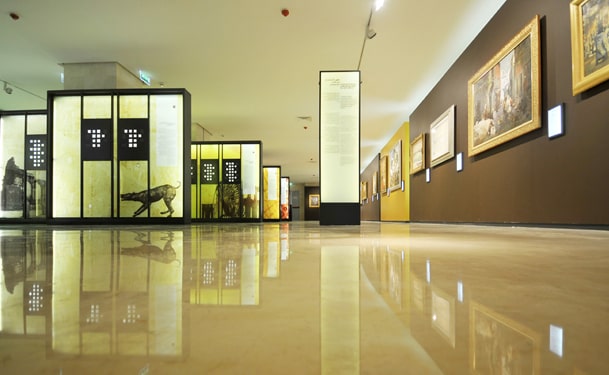
Bank Al Maghrib Museum houses a large collection numismatic collection which reflects several centuries of the Kingdom’s history. With over 30 000 currency items, objects, monetary instruments and bank notes, the numismatic collection recounts in a chronological order the money and bank note history from antiquity till today. The art gallery permanently exhibits a rich collection of 800 art works. From the first Orientalist representations of Morocco to Moroccan paintings...
More details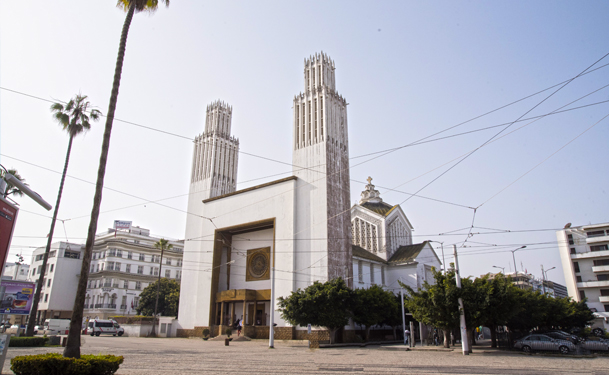
The work of architect Adrien Laforgue, St. Pierre Cathedral was inaugurated on November 17th 1921 by Resident General Hubert Lyautey. The Edifice is located at Sahat Al Joulane (Al Joulane Square) within an architectural ensemble, designed in a circular way. The Cathedral is still in service and the mess is daily celebrated. The Institut Français offices are presently occupying part of the Cathedral’s ancient presbytery. Sahat Al joulane is characterized...
More details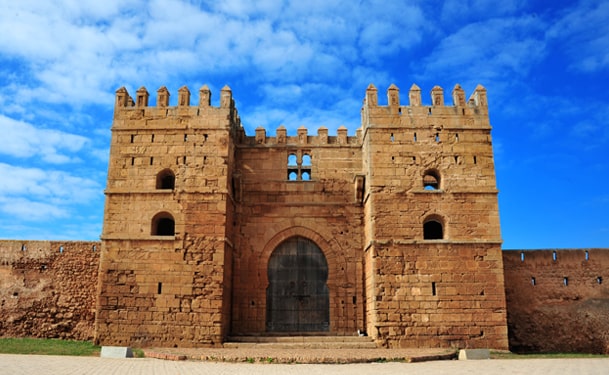
Al Mehdiya is located on the left bank of Sebou, about thirty kilometers northeast of the city of Salé. Built on a rocky escarpment, its fortifications stand on the edge of the Atlantic to dominate the coastal plain and protect the mouth of the river. Several monuments, which still rise inside the citadel, date from several historical periods and testify to the diversity of the Mediterranean cultural influences.
More details
The Bab el Kebir gate was built in 1150 by the Caliph Abdelmoumen and is one of the jewels of the Almohad architecture. 38.60 m long, 16 m wide and 13 m high, this door is made up of three rooms that follow each other in succession: the first (7.48 m x 7.12 m) is covered with a dome on horns; three steps lead to the second room (7.51 m...
More details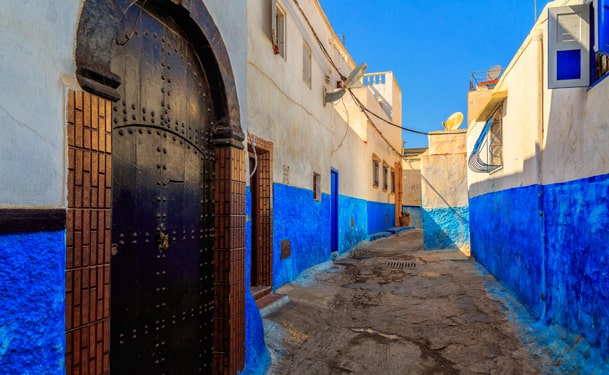
The Mellah of Rabat is an ancient quarter surrounded by walls, with several accesses, formerly reserved for the Jews, who later deserted it. It is a kind of enclave with its own character in comparison with the other neighborhoods because of its atmosphere animated by merchants, street vendors and other activities scattered in its alleys swarming with shoppers. Before, Moroccan Jews built entire neighborhoods in the Mellahs. They baptized their...
More details
For those who don’t know it yet, you can admire the magnificent skeleton of a 15-m-long, 15-million-year-old Sauropod dinosaur at the Museum of Earth sciences. Worthy of Jurassic Park, it was discovered in 1979 in Azilal region of the High Atlas. In this museum, you can also, through the exhibition, trace the geological history of the Earth origins.
More details
Founded in 1991, it is a private Moroccan ethnographic museum located in the commune of Sidi Bouknadel, near Salé, on the road to Kenitra. It contains various collections: instruments of Andalusian and Berber music, ancient weapons, traditional clothes, carpets, jewels, coins, Quranic texts, etc.
More details
Maroc Telecom museum has a rich collection of items and old equipment that represent the technological and institutional developments of telecommunications in general and Morocco in particular. The museum is distinguished by the presentation of the elements of its collection according to a didactic purpose. It was designed to be a real informal learning site. Most items and equipment exposed work, even the oldest. Visitors can test them with the...
More details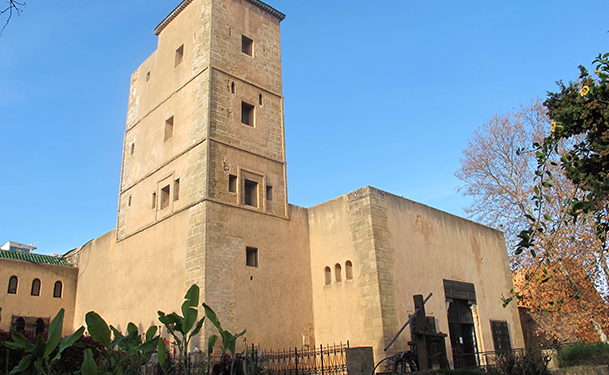
The museum was set up in the ancient pavilions erected under the reign of Sultan Moulay Ismail (1672-1727) to serve as a place of residence in Rabat. By its architecture, décor and garden, the building constitutes a masterpiece in itself. The museum was established there in 1915. It includes clothing collections representing several regions of the country.
More details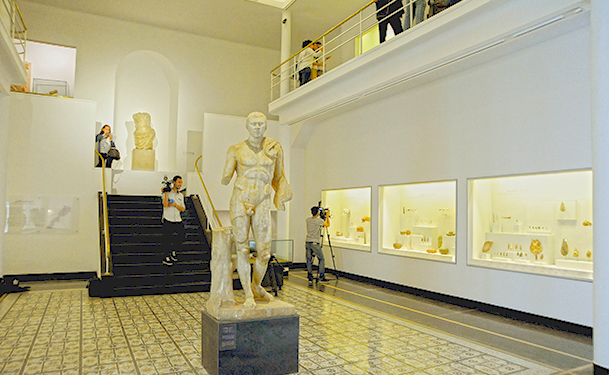
The history of the museum’s collections begins in 1915 with the launch of a series of archaeological excavations under the French Protectorate, on the initiative of the famous General Lyautey. The most famous and richest of these excavations were those of the Roman site of Volubilis, under the direction of Louis Chatelain. The many discoveries of exceptional objects necessitated the establishment of an antiquities department, which was officially created in...
More details
Bab Rwah Gallery Built in 1197 by Yaacoub Al Mansour Al Mouahidi, Bab Rouah is the largest gate of the Almohad and the most richly decorated. The gate gives access to four square rooms. At the beginning of the 60’s, the door was rehabilitated into an exhibition gallery. In 1986, it benefited from a first restoration appropriate to its new function. In 2001, the Ministry of Culture undertook new redevelopment...
More details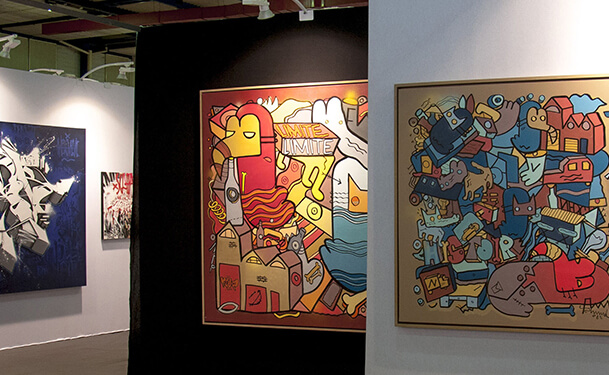
The Art Gallery of Crédit Agricole of Maroc is a space designed to highlight the traditional Moroccan heritage dominated by rurality and largely influenced by urbanity. It is in the alliance of these two complementary realities that the CAM art gallery intends to promote the work of contemporary creation of Moroccan artists.
More detailsNo results were found, please check back later!
All you need to guide you in your discovery of the capital. Welcome to the Rabat region.
Find here all the necessary information for a successful stay:
Transports, instructions, climate, plans ...
Discover Rabat - Sale - Kenitra: prepare your trip, visit online the touristic places of the region ...
More details